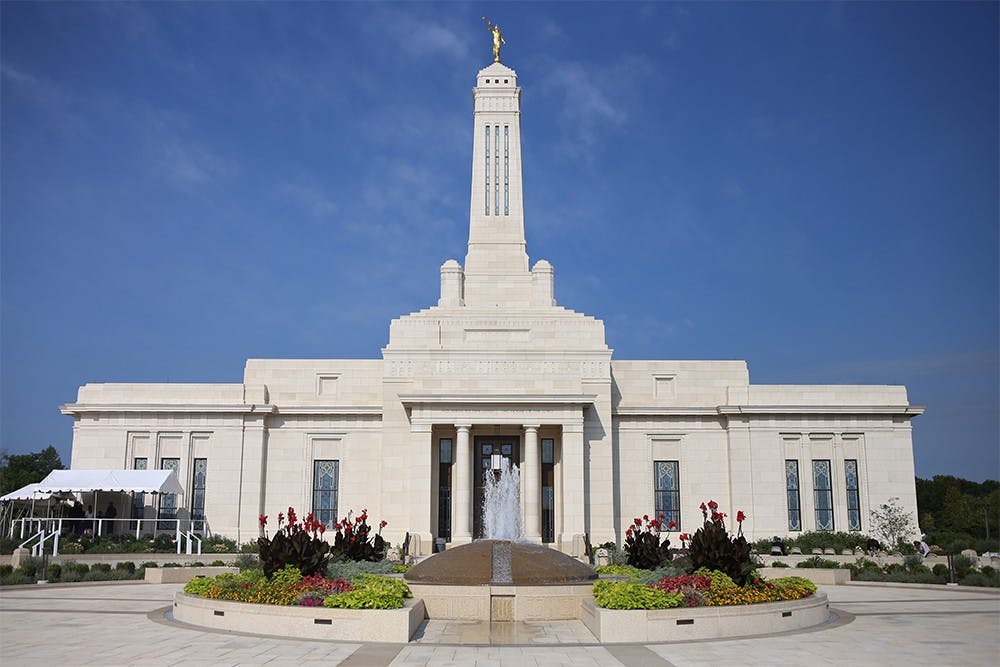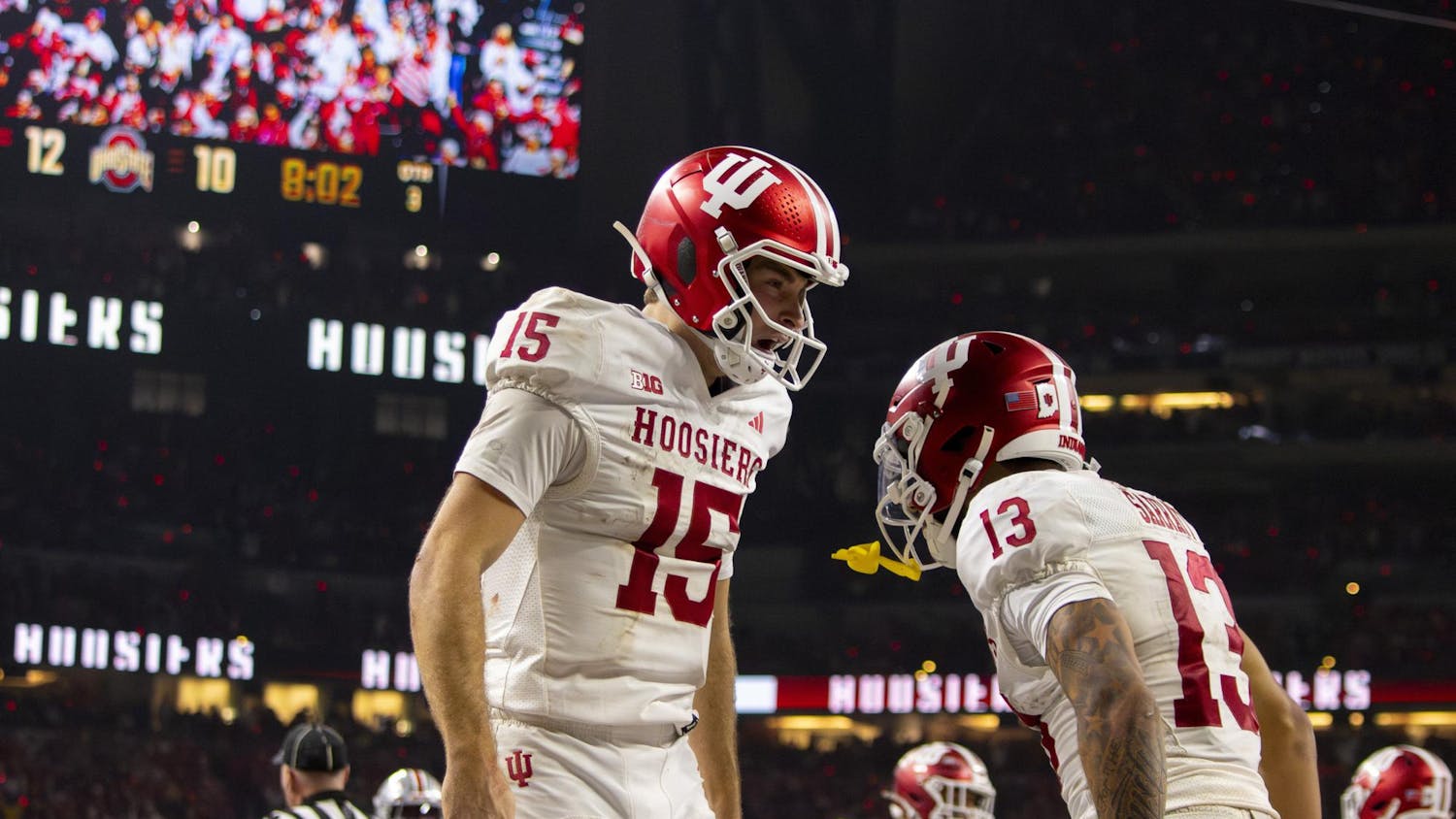“I suppose they could arrest me,” she said, leaning against a dark green electric box. “I don’t want to ‘tempt the devil,’ so to speak.”
Annette, who asked to be identified by only her first name, dressed as modestly as she could. She knew jeans would attract attention, so she opted for a long green skirt instead. Her wide-brimmed hat stayed in the car.
Kept out of sight by a low black fence, two lanes of traffic and a knee-high bush, Annette held the binoculars against her wire-rimmed glasses as Mormon dignitaries sealed the cornerstone with mortar. She strained to listen to the hymn that floated through nearby trees.
“I’m curious to see their statement, what they’re telling people,” she said. She had spent almost 30 years in the Mormon faith before leaving and now she had come to the temple’s dedication to feed her curiosity.
As the ceremony ended and people started filing into the parking lot, Annette left the security of her electric box and headed across the street. Mormon temple No. 148 — the first to be built in Indiana — loomed ahead of her.
After winding through the parking lot, being careful to stay on the sidewalk — “Sidewalks are public property,” she repeated — Annette arrived to find the gates open. She sidestepped into the circular garden as her eyes widened.
Mormon doctrine requires the finest of materials be used to build temples, so the Church flew in Turkish limestone to line the walls. Custom-made stained glass windows were adorned with tulip trees in homage to Indiana’s state tree. A 900-pound gold-leaf statue of the angel Moroni stood atop a 106-foot spire.
“It shows the significance,” Kathie Schofield said. She and her husband, Mark, drove down from Detroit to celebrate the dedication with their daughter. “This is it. This is the most important thing we’ll ever do, is to marry in the temple and return to worship here.”
Temples serve as the center of Mormon faith and families. A small minority of Mormons are allowed inside, but only after passing a rigorous interview with their local bishop.
Inside, Mormons undergo a series of rituals that propel believers into eternity. Publicly, those ceremonies are limited to temple marriages and baptisms for the dead, in which church members are baptized in representation of loved ones who have already died.
“The ordinances that occur here, in our belief, are the most significant things that happen anywhere on the earth,” Mark said.
Privately, temples may house more ceremonies than the Church admits. A group of anti-Mormon educators spent parts of July and August on sidewalks around the temple in an attempt to stop the spread of “Mormon culture.”
Shane Jones, a director of discipleship at Mormon-focused Tri-Grace Ministries, flew in from Utah to expose what he believed to be a foundation of lies in the Mormon Church.
“We want to tell the rest of the story,” he said. “They’re giving this surface thing, so we wanted to get down a little bit deeper and let everybody see how big the iceberg gets below the water.”
Mark brushed off the criticism. Mormons are taught to preach the gospel to all people, he said, but the Church respects other beliefs and faiths.
During the five years Mark served as a bishop, he dove into attacks on his faith. He debated critics, refuted anti-Mormon claims and felt his stress rise with each argument. Not anymore.
He looked down and grabbed his 9-year-old granddaughter’s hand. “Eliza, why is the temple so important to you?” he asks.
She stared at the ground. “Because my parents got married there.”
“Is that where you want to get married?”
A nod of the head. Yes.
“Somebody says they want to marry you, but they don’t want to take you to the temple, will you marry them?”
The prospect of marriage excited her. She looked up and smiled. “No!”
Construction of Mormon temples has picked up speed in recent years. The goal, Mark said, is to have a temple within three hours of every Mormon.
Twenty years ago, Annette removed her name from the Church registry and officially became an ex-Mormon. After adjustment back into what she called “normal society,” she’s become more comfortable outside of Mormonism than she was in it.
“I can have my morning coffee without any guilt feelings,” she said with a grin.
Annette attends a Presbyterian church in Indianapolis but was hesitant to call herself religious. No organized religion is as pure as it projects itself to be, she said.
As Annette stood in the garden and fiddled with the binoculars around her neck, she watched people filter out of the temple. Since removing herself from the Church, she’s watched dozens do the same.
“We’ve already got a leak in the dam,” she said. “One of these days, the dam’s going to collapse.”
The giant wooden door opened, and a white-clad woman slipped out. Looking into the temple behind her, the woman pulled off a pair of white shoe covers as the door swung shut.






